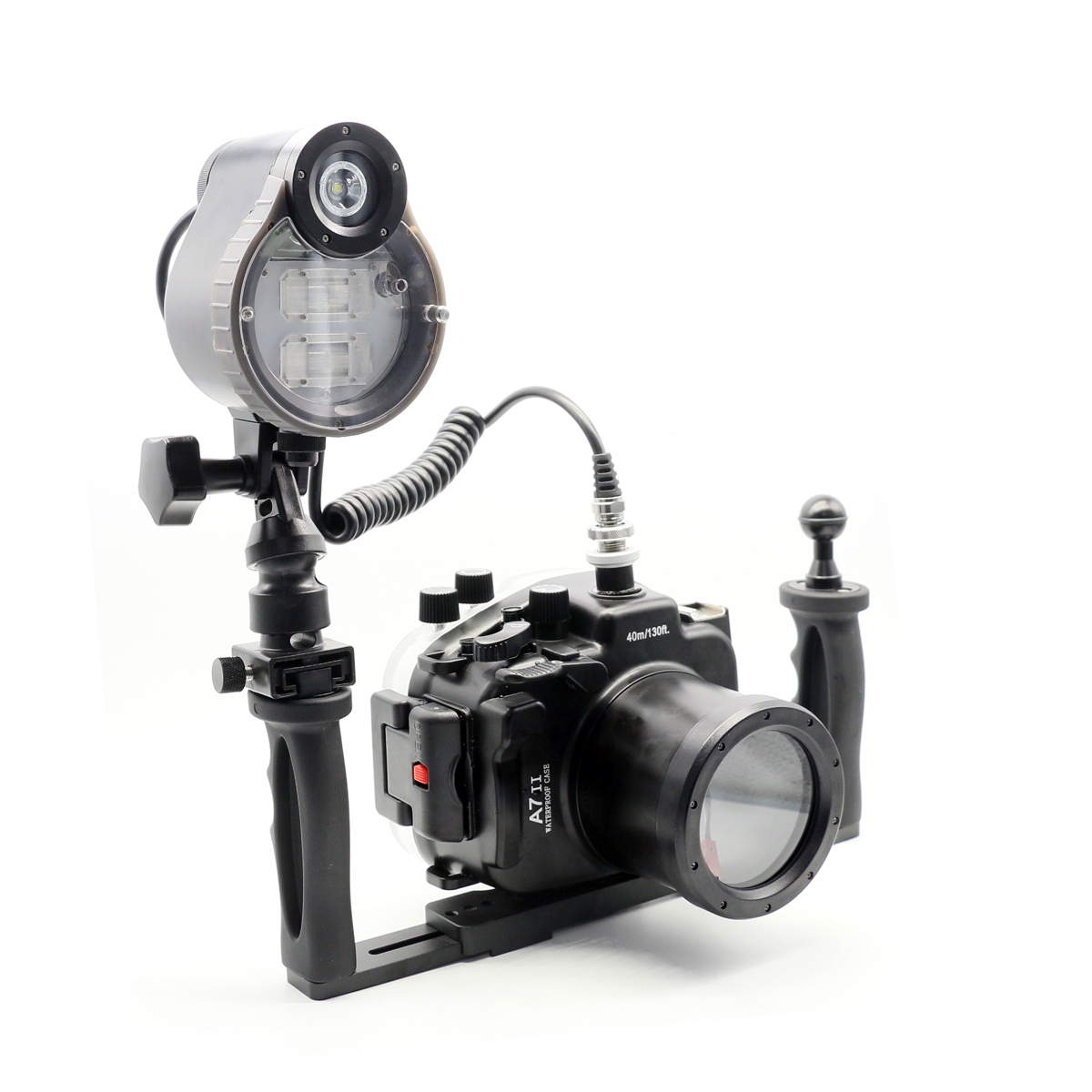- All
- Product Name
- Product Keyword
- Product Model
- Product Summary
- Product Description
- Multi Field Search
Views: 17 Author: Site Editor Publish Time: 2016-09-02 Origin: Site

Why Use a Single Strobe?
Obviously one strobe is less expensive than two, but there are other reasons that using a single strobe might actually be preferable.
using a single powerful strobe for wide angle is quicker, more ergonomic, and better suited to your style. use a customized diffuser that spreads the beam evenly across 180 degrees so that you can cover even the 16mm full-frame fisheye lenses. you can also use a long articulated arm, but handhold the strobe so that you can paint whatever portion of the scene best contributes to color or texture. In wide angle the sunlight is your secondary source of light
What Are the Best Arms?
While you can handhold a single strobe, a second strobe requires some form of arm system. Merely the need to have a hand free to trigger the shutter presupposes that the second strobe will be mounted to a tray or housing. Ideally, both strobe arms are articulated (ball joints are the most common form of articulation) so that the strobe head can be positioned quickly and stay where it's placed. The arms should also feature a means to quick-disconnect from the tray to facilitate handheld lighting or to fit the system into a confined space.
Leoben offers high-quality articulated ball joint arms. Those who find their housings or Nikonos RS camera to be too heavy in the water may also appreciate Ultralight's buoyancy arm. It is a simple concept: a hollow arm designed to provide lift, but a good solution to an affliction I have been plagued with, "RS Elbow."
Do I Need Wet Connectors?
Photographers can't change film under water, so to shoot more than one roll of film per dive, you must carry more than one camera. For those using dual strobes, dedicating a set of strobes to each camera can get expensive and quite cumbersome. The solution is wet connectors so that the same strobes can be used for each camera by means of an electrical contact that is able to connect and disconnect under water.
This is not necessarily a new concept; in fact I have been using E-O connectors (named for their manufacturer, Electro-Oceanic) on my Nikonos and housed cameras for more than 20 years. E-O connectors are very difficult to find these days and because they are only suitable for manual exposures, they are impractical for those who prefer TTL automation. A new solution is available from Aquatica, which offers a five-pin TTL wet connector available in a variety of configurations to accommodate most any TTL strobe, camera or housing. TTL strobes can finally be used on multiple camera systems on a single dive.
Now if only all the camera and housing trays had a common quick-disconnect levered receptacle (like we have on tripods) rather than awkward 1/4x20 screws, it would be a wonderful world. Are you manufacturers listening?
Why Use Dual Strobes?
A second strobe is typically used for one or more of these three reasons: